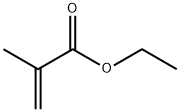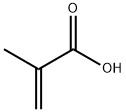1,4-Butanediol dimethacrylate
- CAS NO.:2082-81-7
- Empirical Formula: C12H18O4
- Molecular Weight: 226.27
- MDL number: MFCD00008594
- EINECS: 218-218-1
- SAFETY DATA SHEET (SDS)
- Update Date: 2024-12-18 14:08:57

What is 1,4-Butanediol dimethacrylate?
Description
Sensitization to 1,4-butanediol dimethacrylate (BUDMA) was reported in dental technieians, with cross reactivity to methylmethacrylate.
Chemical properties
1,4-Butanediol dimethacrylate has a clear liquid appearance and is used as a cross-linking methacrylic monomer of polymers. They are present in dental composite materials, sealants, and inks. 1,4-Butanediol dimethacrylate is a non flammable liquid, with a low volatility and a moderatesolubility in water.
The Uses of 1,4-Butanediol dimethacrylate
cross-linking methacrylic monomer for use in dental-composite materials, sealants, prostheses, etc.
Properties of 1,4-Butanediol dimethacrylate
| Melting point: | −117 °C(lit.) |
| Boiling point: | 132-134 °C/4 mmHg (lit.) |
| Density | 1.023 g/mL at 25 °C (lit.) |
| vapor density | 2.09 (vs air) |
| vapor pressure | 430 mm Hg ( 25 °C) |
| refractive index | n |
| Flash point: | 38 °F |
| storage temp. | 2-8°C |
| solubility | Chloroform (Sparingly), Methanol (Slightly) |
| form | Liquid |
| pka | 9.8(at 25℃) |
| color | Clear colorless to slightly yellow |
| Water Solubility | 243mg/L at 20℃ |
| Merck | 14,9710 |
| BRN | 956566 |
| CAS DataBase Reference | 2082-81-7(CAS DataBase Reference) |
| NIST Chemistry Reference | 1,4-Butylene glycol dimethacrylate(2082-81-7) |
| EPA Substance Registry System | 1,4-Butanediol dimethacrylate (2082-81-7) |
Safety information for 1,4-Butanediol dimethacrylate
| Signal word | Warning |
| Pictogram(s) |
 Exclamation Mark Irritant GHS07 |
| GHS Hazard Statements |
H315:Skin corrosion/irritation H317:Sensitisation, Skin H319:Serious eye damage/eye irritation H335:Specific target organ toxicity, single exposure;Respiratory tract irritation |
| Precautionary Statement Codes |
P261:Avoid breathing dust/fume/gas/mist/vapours/spray. P264:Wash hands thoroughly after handling. P264:Wash skin thouroughly after handling. P271:Use only outdoors or in a well-ventilated area. P280:Wear protective gloves/protective clothing/eye protection/face protection. P302+P352:IF ON SKIN: wash with plenty of soap and water. P305+P351+P338:IF IN EYES: Rinse cautiously with water for several minutes. Remove contact lenses, if present and easy to do. Continuerinsing. |
Computed Descriptors for 1,4-Butanediol dimethacrylate
New Products
Tert-butyl bis(2-chloroethyl)carbamate (S)-3-Aminobutanenitrile hydrochloride N-Boc-D-alaninol N-BOC-D/L-ALANINOL N-octanoyl benzotriazole 4-Hydrazinobenzoic acid 3,4-Dibenzyloxybenzaldehyde 1,1’-CARBONYLDIIMIDAZOLE R-2-BENZYLOXY PROPIONIC ACID 1,1’-CARBONYLDI (1,2-4 TRIAZOLE) 4-HYDROXY BENZYL ALCOHOL 3-NITRO-2-METHYL ANILINE (2-Hydroxyphenyl)acetonitrile 4-Bromopyrazole 5-BROMO-2CYANO PYRIDINE 5,6-Dimethoxyindanone 5-broMo-2-chloro-N-cyclopentylpyriMidin-4-aMine 4-methoxy-3,5-dinitropyridine 2-(Cyanocyclohexyl)acetic acid 2-aminopropyl benzoate hydrochloride 1-(4-(aminomethyl)benzyl)urea hydrochloride tert-butyl 4- (ureidomethyl)benzylcarbamate diethyl 2-(2-((tertbutoxycarbonyl)amino) ethyl)malonate Ethyl-2-chloro((4-methoxyphenyl)hydrazono)acetateRelated products of tetrahydrofuran








You may like
-
 1,4-Butanediol dimethacrylate, 95% CAS 2082-81-7View Details
1,4-Butanediol dimethacrylate, 95% CAS 2082-81-7View Details
2082-81-7 -
 Tetramethylene Glycol Dimethacrylate (stabilized with MEHQ) CAS 2082-81-7View Details
Tetramethylene Glycol Dimethacrylate (stabilized with MEHQ) CAS 2082-81-7View Details
2082-81-7 -
 1,4-Butanediol dimethacrylate CAS 2082-81-7View Details
1,4-Butanediol dimethacrylate CAS 2082-81-7View Details
2082-81-7 -
 55441-95-7 99%View Details
55441-95-7 99%View Details
55441-95-7 -
 N-Vinylformamide 99%View Details
N-Vinylformamide 99%View Details
13162-05-5 -
 Chloro Uracil 1820-81-1 99%View Details
Chloro Uracil 1820-81-1 99%View Details
1820-81-1 -
 2-ethyl-6-methyl-3-hydroxypyridine succinate 99%View Details
2-ethyl-6-methyl-3-hydroxypyridine succinate 99%View Details
127464-43-1 -
 2-ETHYLPYRIDINE 100-71-0 99%View Details
2-ETHYLPYRIDINE 100-71-0 99%View Details
100-71-0
Statement: All products displayed on this website are only used for non medical purposes such as industrial applications or scientific research, and cannot be used for clinical diagnosis or treatment of humans or animals. They are not medicinal or edible.